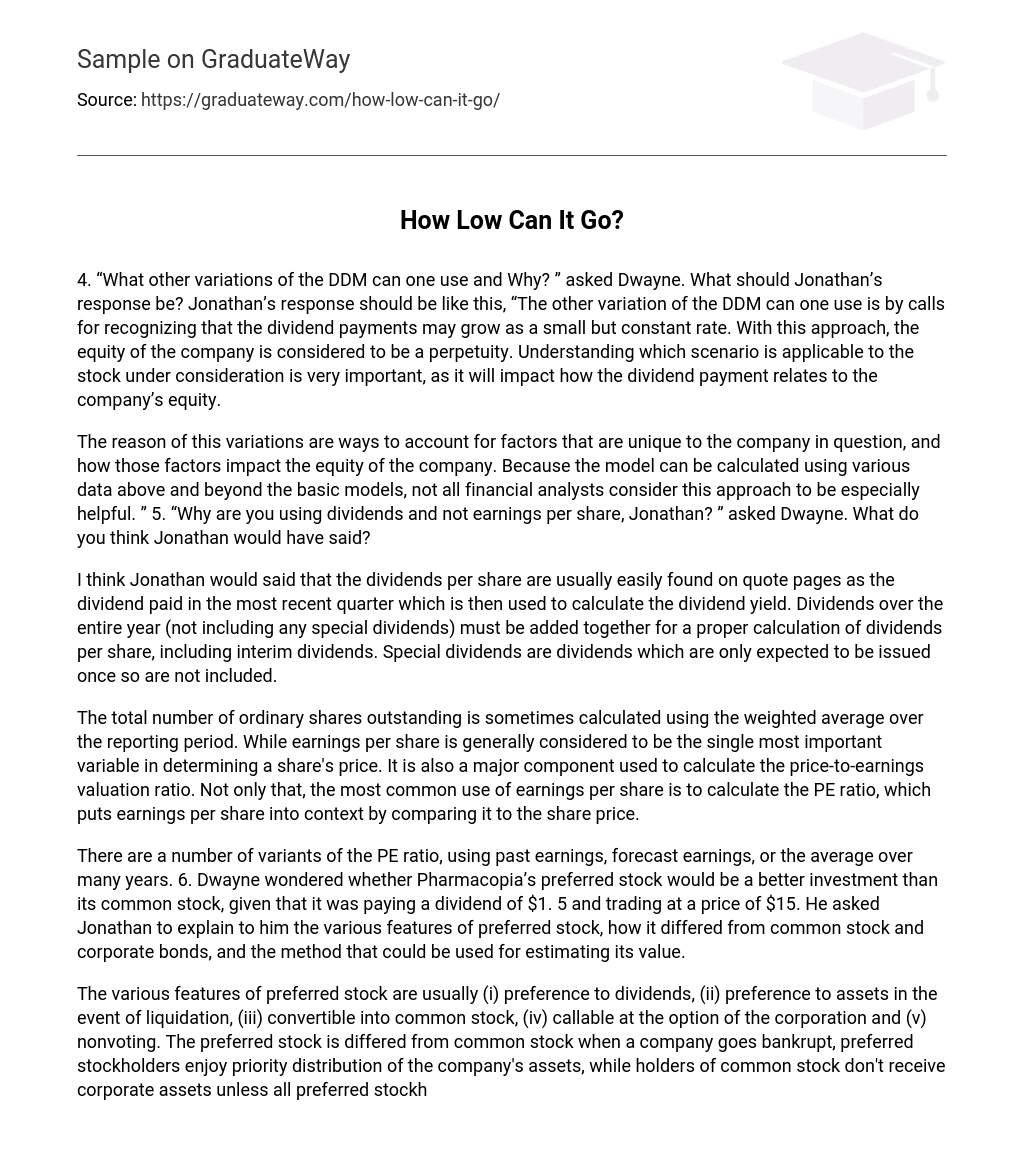4. Dwayne inquired about the different versions of the DDM that can be utilized and their reasons for use. Jonathan should reply by explaining that one alternative version of the DDM acknowledges dividend payments that gradually increase at a consistent rate. This method regards the company’s equity as an ongoing perpetuity. It is essential to ascertain which scenario pertains to the stock under examination, as it will impact how dividend payments relate to the company’s equity.
The reason for these variations is to take into account unique factors specific to the company in question and understand how they affect the company’s equity. Due to the inclusion of additional data beyond basic models, not all financial analysts find this approach particularly useful. Dwayne asked Jonathan, “Why are you using dividends instead of earnings per share?” What do you think Jonathan’s response would have been?
Jonathan states that dividends per share can usually be found on quote pages. These dividends represent the payment made in the most recent quarter and are crucial for determining the dividend yield. To accurately calculate dividends per share, it is necessary to combine the dividends for the entire year, excluding any special dividends, as well as interim dividends. Special dividends, which are expected to occur only once, are not taken into account when making this calculation.
The total number of ordinary shares outstanding is calculated using the weighted average during the reporting period. Earnings per share plays a crucial role in determining a share’s price and calculating the price-to-earnings valuation ratio. Moreover, earnings per share is often employed to contextualize the PE ratio by comparing it to the share price.
There are various forms of the PE ratio, which can be based on historical earnings, projected earnings, or the average over multiple years. Dwayne questioned whether Pharmacopia’s preferred stock would be a more advantageous investment compared to its common stock. This consideration was prompted by the fact that the preferred stock had a dividend of $1.5 and was being traded at a price of $15. Consequently, he sought Jonathan’s insights on the distinct characteristics of preferred stock, how it differed from common stock and corporate bonds, and the approach for estimating its value.
The different characteristics of preferred stock typically include (i) prioritized dividends, (ii) prioritized assets in the event of liquidation, (iii) conversion into common stock, (iv) callable by the corporation, and (v) nonvoting rights. Preferred stockholders hold a higher rank than common stockholders in receiving the company’s assets during bankruptcy proceedings. However, common stockholders will only receive corporate assets after all preferred stockholders have been compensated, as bond investors have priority over both common and preferred stockholders.
Meanwhile, the price fluctuation of preferred stock differentiates it from corporate bonds. Preferred stock is expected to increase in value as a company’s earnings grow. In contrast, bond prices are influenced by prevailing interest rates. If interest rates rise, the fixed rate of bonds makes them less attractive and their price decreases. Conversely, when interest rates decrease, bond prices typically rise. Additionally, bonds are categorized based on risk levels that measure the probability of the issuer repaying the bond upon maturity.
When a bond’s rating decreases, its price typically decreases as well. Preferred stock is valued as a perpetuity with fixed dividends. Thus, valuing preferred stock can be approached similarly to a constant growth stock without any dividend growth rate. Consequently, the price of a share of preferred stock can be determined using the following equation: where •Pp = the price of preferred stock, •Dp = the preferred dividend, and •r = the required return on the stock.





